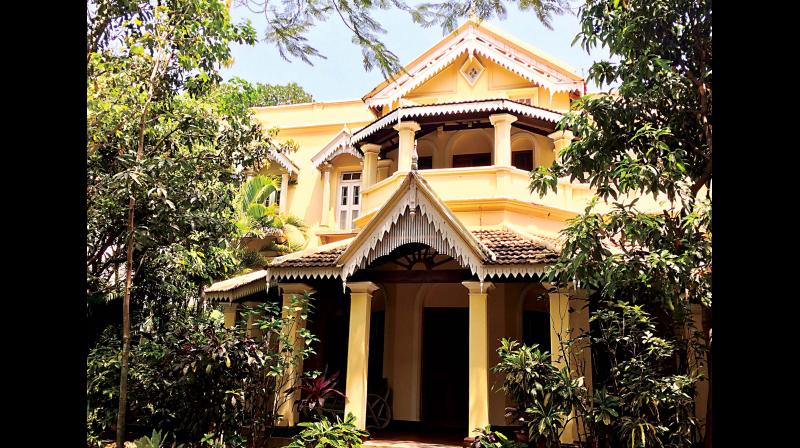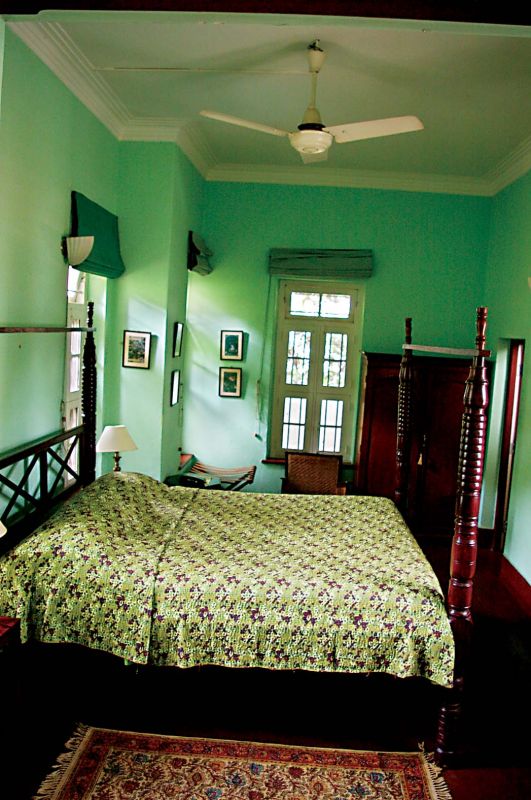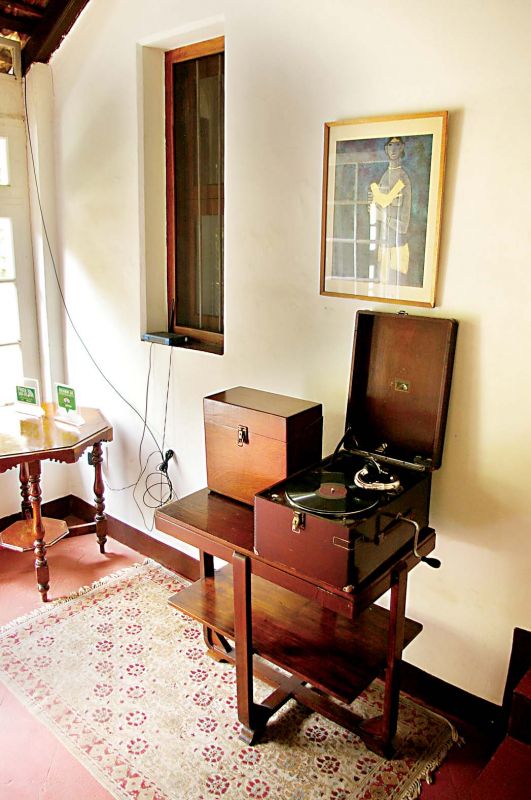City crumbling: Another one bites the dust
The lack of government initiatives is a major impediment, agree private property owners.

It was a chance visit to Stratford-upon-Avon back in 2011, that inspired then Law Minister Suresh Kumar to spearhead the restoration and maintenance of the R.K. Narayan house in Mysuru. The house, which had been marked out for its date with the wrecking ball, has a happy ending: it was subsequently notified as a heritage building under the Karnataka Town and Country Planning Act.
Heritage structures that aren’t privileged enough to have housed a much-loved bard and cannot therefore be earmarked for a souvenir store and quaint cafe, are far less fortunate. Cultural heritage is a hefty price to pay for development but it is extracted all the same, with the appeal of rising market value for land overshadowing the exorbitant costs of restoring and maintaining privately owned structures.
“It’s a tough problem,” agrees Meera Iyer, co-convenor, INTACH, but not insurmountable. Bengaluru, she says, has about 450 heritage structures, not counting government’ buildings – “It’s ridiculous to think we can’t protect them!”
Enthusiasm from the public isn’t lacking, either. The ‘adopt a chateau’ project in France, where 10,000 people saved a chateau from demolition, has greatly enthused local heritage aficionados. “We’re ready to start a corpus through crowdfunding and CSR,” says historian and architect Mansoor Ali. Exciting though this may sound, the government has no locus standi on private property and little can be achieved, says architect Naresh Narasimhan, without a clear policy in place. The lack of government initiatives is a major impediment, agree private property owners, who are usually at the receiving end of much ire when a heritage property is sold.

HERITAGE LOST
On Tuesday evening, Bangalore: Photos from a Bygone Era, the Facebook group for heritage afficionados, roared its lament as the ominous green nets came up around Villa Pottipati. The building had been demolished even before the hue-and-cry hit its crescendo. Ajay Ghatage, a Malleswaram resident and long time lover of history, saw, to his dismay, that the house had been slated for demolition.
The sentiment is understandable, of course. In reality, however, the restoration and maintenance of a heritage building is often far more trouble than it is worth. The ensuing commotion saw Facebook posts go viral and many a maudlin tribute, which conservationists agree, don’t take you very far when it comes to protecting private property.
THE CHALLENGES
Shivadarshan Balse, who is the owner of a 100-year-old house in Malleswaram, did attempt to make this point on social media, although his voice was quickly drowned out. “About a year ago, I decided to get the house painted. When the Berger people came along they found their high-pressure pumps tearing through the plaster.” That led to the lime and mortar (pre-cement) plaster being removed and replaced. “I wanted the originality to be maintained, which meant the workmen were doing about four feet a day. We decided to get the electrical wiring and the roof redone as well. I was lucky to have some money put by, because the government will not help you.” Finding workers capable of restoring heritage structures was another tall order and Balse admits it was help from a builder friend that made it happen. “Expense is one thing but I can tell you the worst thing to undertake in Bengaluru is finding a skilled worker to restore an old house,” he says, emphatically.
Cinnamon, the boutique store on Gangadhar Chetty Road, once an orphanage built in 1900 and restored by Radhika Poddar, Manikyavelu Mansion, now the National Gallery of Modern Art (restored by Venkataramanan Associates) and Raintree, a boutique store that also functions out of a restored bungalow opposite the Windsor Manor, are among the fortunate exceptions to the rule.
SOLUTIONS APLENTY
“The government has to understand that heritage is a part of our collective identity as a city,” says architect Naresh Narasimhan, whose firm, Venkataramanan Associates was behind the restoration of Manikyavelu Mansion. “There is very little left although there are multiple ways of finding funds to hold on to it.” A cess for public libraries, he says, is paid on every sanctioned building plan in the city. “That fund has accumulated some '800 crores but nobody is spending it. The solutions for funding are simple. Putting a small cess on every development activity, even if that is only one percent, can amount to a lot of money.”

If private property is being notified as protected, the owner needs to be given some kind of compensation, says Meera Iyer. At the moment, a property being declared a heritage structure drives its value down.” Cities like Puducherry on the other hand, Iyer explains, take exactly the opposite approach.
TDR: The Transfer of Development Rights, a mechanism that can be used to compensate owners of heritage properties, has been largely decried. “Yes, there is talk of it being a slippery slope, but it’s worth a try. Cities like Ahmedabad do use it,” says Iyer.
In 2017, the government of Goa offered extra floor area ratio in special zones to give owners of heritage property some compensation to retain them.
Heritage Policy: “We can collect funds and create a corpus but little can be achieved without a clear policy,” says Narasimhan. In 2002, activists came together to draft a Heritage Regulation Policy. “That too is still with the government,” Narasimhan adds. “Without a policy in place, it’s unfair to expect landowners to hold on to their properties. There is definitely a way but before that, we need a will.”
VILLA POTTIPATI
The flowers of the magnificent Shiva Linga, or Cannonball Tree, formed a brilliantly-hued carpet, welcoming visitors to the sprawling Villa Pottipati. With its sloping roofs, monkey tops and double-panelled tiled roof, the villa is an iconic mix of colonial and local architectural styles, explains Mansoor Ali, architect and historian. The house is commonly believed to pre-date Malleswaram, although T.P. Issar’s City Beautiful says the year was 1925. “It was believed to have been built by a British collector and then bought by one Rama Reddy,” says Ali.

A courtyard provided access to all eight rooms, each of which is named after places famous for traditional Indian sarees. Ali says. Restored by the Neemrana Group, Villa Pottipati was transformed into a boutique hotel,The flooring was a mix of red oxide and Channapatna tiles, while part of the house came with an ornate, Mangalore tile roof. “Neemrana did a good job with furniture too, bringing in four-poster beds, furniture made from burma teak, rosewood staircases and so on,” says Ali. The piece de resistance, however, lay outside, in the erstwhile stables, which were converted into a al-fresco dining area.
(With inputs from Aknisree Karthik)
B04
